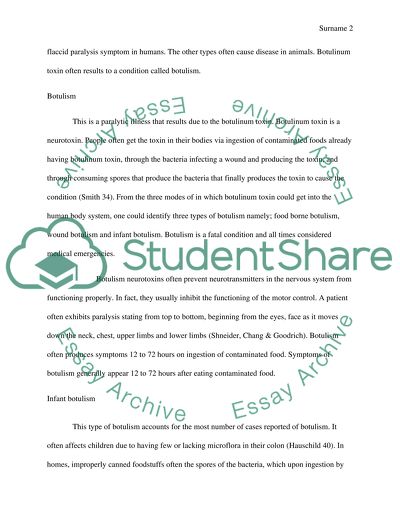Clostridium Botulinum Research Paper Example | Topics and Well Written Essays - 750 words. Retrieved from https://studentshare.org/biology/1455473-clostridium-botulinum
Clostridium Botulinum Research Paper Example | Topics and Well Written Essays - 750 Words. https://studentshare.org/biology/1455473-clostridium-botulinum.


